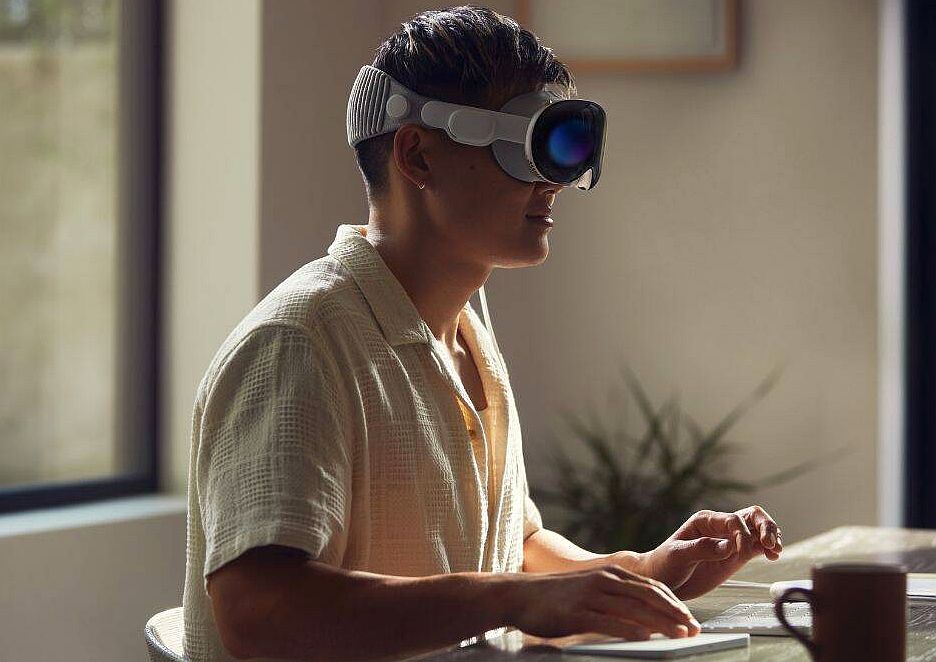Apple announced it’s “next big thing” at the WWDC 2023 conference on June 5. Of course, the device was not a mystery and Apple followers expected a mixed reality headset (a departure from Steve Jobs’ “one more thing” mystery announcements that wowed Apple fans at that time). Apple CEO Tim Cook even alluded to a mixed reality headset at interviews to GQ India and other publications. But will Apple’s shiny new toy – the $3,499 Vision Pro (approx. Rs 2,88,402) – be successful when it arrives in retail in early 2024? Or would it just be a rich man’s toy?
By Brian Pereira
What makes a new device a mainstream success goes far beyond the ‘wow’ and novelty factors that wear off after some time. It is really about utility and convenience. Pricing matters too.
Let’s talk about novelty, utility and convenience. With the introduction of revolutionary devices such as the Walkman and iPod for instance, we could take our music on the road and listen to hi-fi quality music on the move. These revolutionary devices unshackled audio enthusiasts from the high-end audio systems (and crates of CDs/cassettes/LPs) in their living room. We later saw that with the boom boxes or “ghetto blasters” that were popular in the 80s and 90s – with street dancers and break dancers. That’s novelty and utility. When TPS-L2, the first commercial Walkman was introduced in 1979, we were wowed by its hi-fi sound and portability. Until, then, cassette players sounded tinny and flat – and were mostly mono. At that time, it costed the equivalent of Rs 50,000 (by today’s rates). However, the pricing came down over the years as other manufacturers launched their own versions; Sony also launched more affordable versions of its Walkman. So that’s about pricing and novelty. Utility? With the first iPod the selling point was a thousand songs in your pocket. That’s like carrying the equivalent of a modest collection of CDs in your pocket!
Now let’s talk about high utility value.
When Apple introduced its smartwatch (Apple Watch) in 2015, it was a lifestyle device with a few apps. People lined up outside Apple stores to buy the Watch because of its novelty value. Later, another version emerged that allowed you to make calls and see messages on the Watch – which was really an extension of the iPhone. But the real utility of Apple Watch today is personal wellness and healthcare. There are numerous reports about how the device saved lives – and saved time during the “golden hour” for heart patients.
That’s an immensely useful feature especially for senior citizens who live alone. I’ve heard stories about parents who are unsteady on their feet and fall down in the middle of the night – and lie helpless on the ground, for hours, till help arrives.
Will we see this kind of utility in the Vision Pro?
It depends on the apps
The idea of announcing Vision Pro early to developers is to give them enough time to develop useful apps for the device. Of course, Apple will also build great apps – on its website it says that it will make all our favorite iOS apps available for the VisionPro. In fact Vision Pro has a new operating system called visionOS.
The selling point for the new mixed reality device is what Apple calls “spatial computing.” They are talking about an immersive experience and a new way to consume apps (and associated services).
Apps, websites and software interfaces will appear to float in front of you. 3D images will seem to hover in your living room. Users control apps with eye movements, voice commands, and hand gestures. To enable that, Apple engineers packed many tiny sensors, microphones, and cameras into the headset.
The ultra high resolution displays in the Vision Pro are packed with 23 million pixels (three times as much as a 4K display), so one gets the experience of watching a movie or game on an ultra-wide TV screen.
I don’t want to go into more details about product features in this post, as plenty has already been written about it on numerous websites. I recommend reading Jaison Lewis’ technophile column in Sunday Mid-day (11 June).
Incidentally, Facebook is already ahead of Apple in the mixed realty space, with its own headset. Facebook offers the Meta Quest 2 at prices starting from $299.99. And Microsoft launched HoloLens 2 in 2019.
Back to The Future
I’ll end with some interesting episodes to ponder about.
Remember Tom Cruise in the flick Minority Report? In the film, Cruise opens apps and plays around with interfaces with hand gestures. And we saw something similar in the movie Iron Man.
Imagine a scene on our roads, five – 10 years from now. We’d see people in cars, trains, buses, and airplanes wearing mixed reality headsets. Maybe even walking on roads wearing these headsets. I’m reminded about what happened in the 1980s, when people started walking on roads or went roller skating (as was the trend then) with their stereo players clipped to their belts and lightweight headphones on their heads.
Sony wanted to position the Walkman as a new lifestyle trend – so it’s lightweight headphones had bright orange ear pads. Apple tried something similar with its pristine white earphones for the iPod.
Well, I’m not sure someone is going to spend this kind of money on Apple’s new gadget – unless they lower the price or offer super high utility. And that goes beyond the realm of immersive personal entertainment or spatial computing.
The writer is the former editor of CHIP magazine (India) and has been tracking personal technology since 1994.

